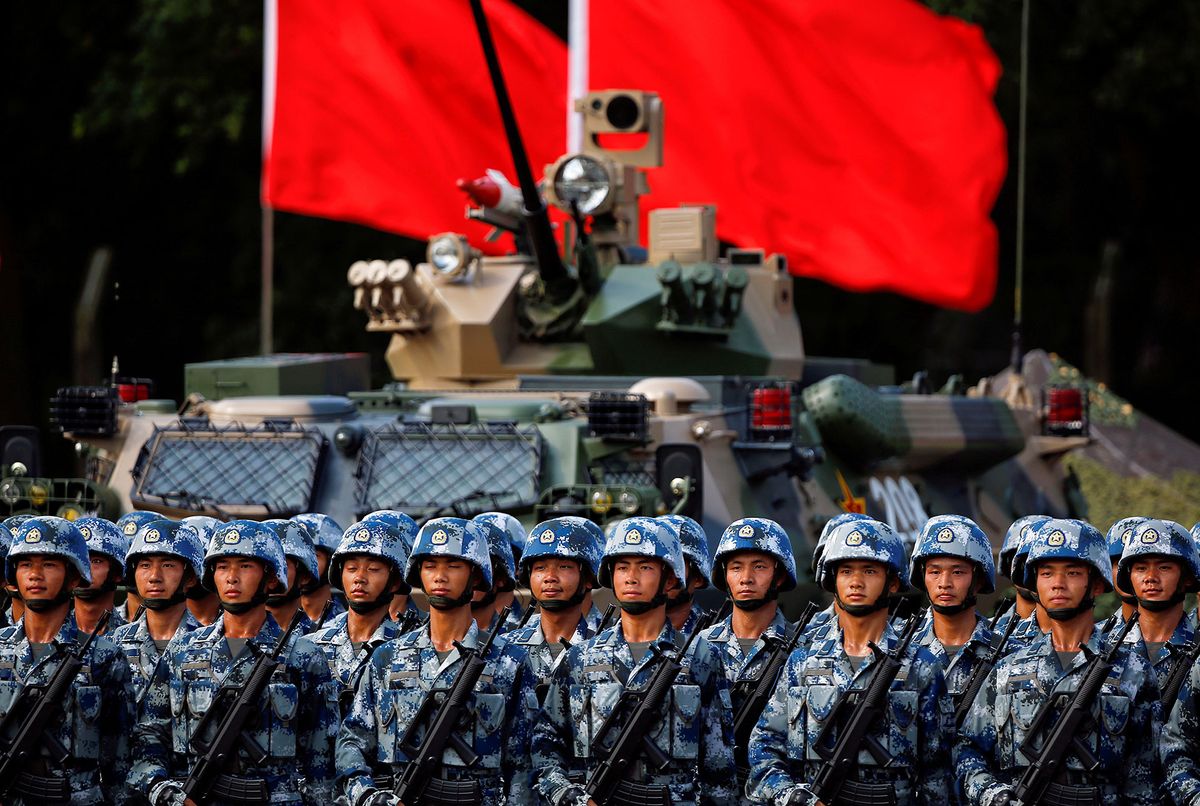The politics of arms exports, explained

A few minutes every morning is all you need.
Stay up to date on the world's Headlines and Human Stories. It's fun, it's factual, it's fluff-free.
When countries buy arms, they’re not only purchasing weapons: they’re buying a relationship. The more advanced weaponry a country buys, the more connected the buyer and the seller become.
When Beijing advertised China as the future hub for high-tech manufacturing, ballistic missiles weren’t on the brochure. But as China has risen from a poor nation to the second-most powerful economy in the world, its arms industry has risen with it.
A report from the Stockholm Institute of Peace Research had staggering results: China, once a minor player in the global arms trade, has surpassed Russia to become the second-largest arms exporter in the world. The report found that sales of Chinese weapons averaged US$70-80 billion.
In comparison, the United States, which remains the largest arms exporter in the world, sold US$226.6 billion in weapons, while Russia sold US$37.7 billion. This is another indication of China’s growing military power. But why are countries throwing so much money in Beijing’s direction?
Some strings attached
When countries buy arms, they’re not only purchasing weapons: they’re buying a relationship. Advanced weapons like aircraft and missile systems require technical expertise, training, and parts and supplies from the seller to the client. The more advanced weaponry a country buys, the more connected the buyer and the seller become.
It’s easy to understand the relations between two countries by analyzing their arms sales. By looking at how much Saudi Arabia and South Korea spend on weapons, it’s easy to connect them to the US. By analyzing the arms purchases made by India, which includes everything from rifles to fighter jets, one can tell that New Delhi values their relationship with Russia. China was also once a significant buyer of Russian weapons before the development of its own industry.
This isn’t only ground-up. While buyers want to gain influence with more powerful arms sellers, the weapons sellers also aim to influence the foreign policy of whatever nation buys their weapons. For example, many policymakers in the US wanted to cut weapon sales to Saudi Arabia to end the Saudi intervention in Yemen.
Who buys from China?
For the People’s Republic of China (PRC), it is Myanmar, Bangladesh, Nepal and, most notably, Pakistan, that are the most willing to buy Chinese weapons. All these nations also border India.
These countries see India as their primary threat and, accordingly, want deeper relations with China. This is especially true of Pakistan, which is probably the most willing participant of the Belt and Road Initiative (BRI) with sour relations with India.
The PRC is also closing the gap in the African market – where the US, Russia and Europe remain dominant – and has been making inroads in the Middle East. Secretary of State Mike Pompeo has voiced concerns that Beijing may supply weapons to Iran as the United Nations arms embargo against that country is lifted.
Why China’s weapons are evolving
The evolution of China’s arms industry correlates with its rise as a great power. The PRC was once heavily reliant on Russia as a defense supplier, but as China expanded its strategic interests – and made more enemies along the way – Beijing lessened its reliance on Russian weapons and invested more in Chinese arms.
This also reflects the different strategic environments that Russia and China exist in. Russian weapons reflect Moscow’s preparation for a confrontation on the Eastern European plains, while Beijing is preparing for a naval confrontation in the South China Sea.
The crown jewel for China’s advanced weaponry is their “aircraft killer” anti-ship missile, which serves as an acknowledgment of the US’ presence in the region. Along with Russia, China is also racing to develop hypersonic weapons, which are too fast to be detected by antimissile systems.
Looking to the future
Will China’s rise be peaceful? The answer is and will likely remain unanswered. But the impetus of it is the arms industry that Beijing continues to build. Had China remained an arms importer from Russia, that question wouldn’t be presented. However, Beijing is aware of the economic progress it has made and wants a defense industry that reflects it.
Ironically, it is the defense of that progress that might inhibit it, as the US and nations neighboring China become more alert to the growth of China’s military and defense industry. Nonetheless, when it comes to Beijing’s defense sector, nations around the world are either signing up – or arming up – to meet it.
Have a tip or story? Get in touch with our reporters at tips@themilsource.com




Comments ()